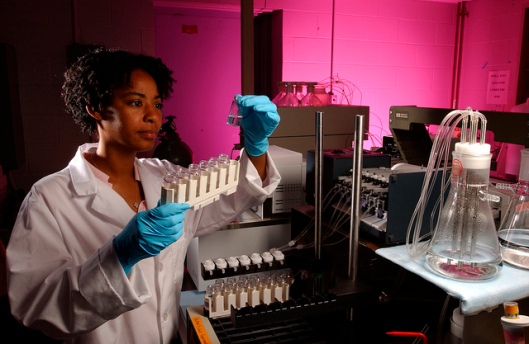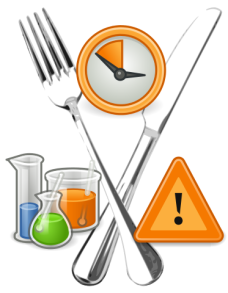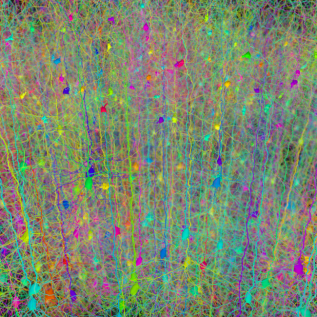How do we stay safe in a world full of chemicals? Everywhere we look, we find chemistry – both natural and synthetic – at work in the air we breathe, the ground we stand on, and in the water we drink. Internally, every cell in our body uses chemistry in order to function and communicate. We are exposed to a multitude of chemicals in our homes, our cars, our environment, at work and even through the food we eat. Many of those chemicals are completely benign, but some could potentially pose serious health risks. Clearly we need not fear all chemicals, but how do we know which ones are safe?

To the rescue, enter chemical safety testing or toxicology, a field that focuses on analyzing chemicals for potential hazards.1 To achieve meaningful results that are relatable to human health, one of the most important methods toxicologists use is to test substances on animals.2 However, while we can all agree that we need toxicology to help keep us safe, no one likes the idea of causing discomfort to another living being. This dilemma has long been recognized in the field of toxicology and is addressed by the “three Rs”: replace, reduce, and refine. The three Rs provide guidelines for promoting good animal stewardship and addressing the ethical concerns surrounding their use for testing (more on this later).
How Does Chemical Safety Work?
When testing for chemical safety, there are lots of questions to answer. For example:
- Which levels of exposure are safe and which cause toxic responses?
- Which chemicals have the potential to damage internal organs?
- Which chemicals may cause cancer?
To provide answers to these big questions and many more, toxicologists often examine the effects of chemicals in various doses on a test group (sometimes animals, sometimes bacteria or just groups of cells). Then they look for things like significant changes in survival, growth and reproductive activity as signs of potential toxicity.
You may have heard the phrase “the dose makes the poison,” and in fact that is very true. It’s not as easy as labeling one chemical harmful and another safe. Take water, for example. If we don’t drink enough, we risk dehydration. However, in excessive quantities, it can actually be fatal!3 In order to make sense of things, toxicologists determine the effects of a range of different doses.

Many different methods and disciplines such as biology, chemistry and genetics come together to provide a comprehensive evaluation of chemicals being tested. Methods for testing vary widely, but one important factor is whether the test is in vivo or in vitro. Latin for “within the living,” in vivo testing is carried out within a living organism. In contrast, in vitro, Latin for “within the glass,” is not. Instead, in vitro tests are conducted outside of a living organism, like in a petri dish or vial, often using human or animal cells. One advantage of in vitro experiments is that they can allow for rapid testing of a large number of chemicals.4 They also allow for very careful control of experimental conditions. However, it may be difficult to relate results from in vitro studies to potential threats affecting any whole organism, much less humans specifically. In vivo testing, as it is conducted within a living system, provides a more holistic look at a chemical’s potential effects on an entire organism.5 No matter the method, every model can provide valuable information about the test chemical and the types of risks it might pose for us.
How Do We Choose Test Models?
Choosing an appropriate test model is a crucial step in planning a toxicology experiment. Let’s consider an obvious example: if a toxicologist is interested in determining potential risks to human health, it wouldn’t help much to perform studies on plants because their systems are so different from ours that it would be difficult to estimate potential risks to human health based on the results. Instead, to study a chemical’s potential health effects, a good model organism to use is one whose system works in a similar way to our own in terms of anatomy, physiology, and biochemistry. This is why animals and other living organisms such as invertebrates have traditionally been preferred for testing.6 Testing substances on plants, rather than bacteria or animals, would make sense if the toxicologist wants to understand the effects of a pesticide on crops.
Everyone wants meaningful results; we want to know that the products that we are using contain ingredients that have been tested for safety. However, no one wants to think about harming a living organism in order to do so, and that includes toxicologists! As mentioned above, the three Rs serve as a long-standing set of principles outlining best practices in choosing appropriate test models for toxicology studies.
The Three Rs of Toxicology
The concept of the three Rs has been around for more than 50 years, first outlined in 1959 by William Russell and Rex Burch, who had teamed up to evaluate the ethics of laboratory practices.6,7 Here is a closer look at the three Rs:
Replace – Whenever possible, eliminate the use of animals through the use of alternative testing methods that use human or animal cell lines, or lesser-developed organisms such as worms and other invertebrates.
Reduce – If the use of animals cannot be avoided, experiments should be designed so that they maximize efficiency and reduce the number of animals needed for testing.
Refine – For those animals that must be used, provide comfortable living quarters, and keep them well fed and healthy. This will not only keep test animals happier, but it could also avoid potentially confusing test results, as stressed animals may react differently to testing.8
Just as the three Rs of waste management – reduce, reuse, and recycle – are meant to improve environmental stewardship, the three Rs of toxicology promote good animal stewardship and address the ethical concerns surrounding their use for testing.
Besides the ethical drawbacks to animal testing, testing a wide variety of chemicals using animal models quickly becomes time consuming and expensive. The animals used in research must be cared for their whole lives, which can require a lot of resources.6 In addition, the doses that are tested on animals are usually of much higher concentrations than humans would likely be exposed to,1,2 adding to the complexity of applying results obtained from animal testing to humans. Finally, different species don’t always react the same way to substances (for example, chocolate is notoriously toxic for dogs!) so there is always some question about how directly results from non-human animals can apply to humans.

To address all of these issues, toxicologists are pushing towards the development of a variety of alternative testing methods to reduce or eliminate the use of animals and achieve more accurate results. New testing techniques are being developed that use the power of chemical or mathematical models and supercomputers to predict toxic outcomes in humans.6
Contact with chemicals is simply inevitable in our world. While many of them are essential for our very existence, the list of new chemicals that are introduced to our environment is growing rapidly, and we need research to find out whether they are safe, and in what quantities. While chemical safety testing has traditionally relied heavily on the use of animals, ethical and practical concerns are pushing the field away from animal models while increasing the relevance of the results to humans. Advances on the horizon for toxicology promise to increase human relevance, reduce cost, increase efficiency and move away from testing on animals. That will certainly keep all of us happier and safer, including our animal friends.
EDUCATIONAL RESOURCES
- UNC School of Medicine: Curriculum in Toxicology & Environmental Medicine
- NOVA Teachers Cancer Warrior activity “to determine the toxicity of salt to an intracellular liver process using a dose response curve.” (grades 5-12)
- Casarett, L., Doull, J., & Klaassen, C. Casarett and Doull’s Toxicology: The Basic Science of Poisons. McGraw Hill Education, (8th ed.) 2013.
- Zurlo, J. No Animals Harmed: Toward a Paradigm Shift in Toxicity Testing. In A Hastings Center Special Report: Animal Ethics: Evolving Views and Practice. (S. Gilbert, G. Kaebnick, & T. Murray, eds.) 2012. Retrieved from http://www.thehastingscenter.org/uploadedFiles/Publications/Special_Reports/AnimalResearchEthics.pdf
- Zurlo, J., Rudacille, D., & Goldberg, A. Toxicology and Toxicity Testing. In Animals and Alternatives in Testing: History, Science, and Ethics. Chapter 3. New York: Mary Ann Liebert, Inc., 1994. Retrieved from http://caat.jhsph.edu/publications/animal_alternatives/chapter3.html
- Judson, R. et al. Perspectives on Validation of High-Throughput Assays Supporting 21st Century Toxicity Testing. ALTEX 30.1. 2013: 51–56. PMCID: PMC3934015
- Gallo, Michael. In Vivo and in Vitro Testing. Encyclopedia of Public Health. 2002. Retrieved from http://www.encyclopedia.com/doc/1G2-3404000449.html
- Burden,N., Sewell, F., & Chapman, K. Testing Chemical Safety: What Is Needed to Ensure the Widespread Application of Non-Animal Approaches? PLoS Biology 13.5 2015: e1002156. doi: 10.1371/journal.pbio.1002156
- Russell, W. & Burch, R. The Principles of Humane Experimental Technique. 1960 (Special edition 1992) Retrieved from http://altweb.jhsph.edu/pubs/books/humane_exp/het-toc
- Understanding Animal Research. The Three Rs. [web page] 2014. Retrieved from http://www.understandinganimalresearch.org.uk/how/three-rs/
- Cuntz, H. Forest of synthetic pyramidal dendrites grown using Cajal’s laws of neuronal branching. PLOS Computational Biology Issue Image. 2010, 6(8) ev06.i08. doi: 10.1371/image.pcbi.v06.i08

[…] original en inglés por Becky Curtis Traducido por Jane […]